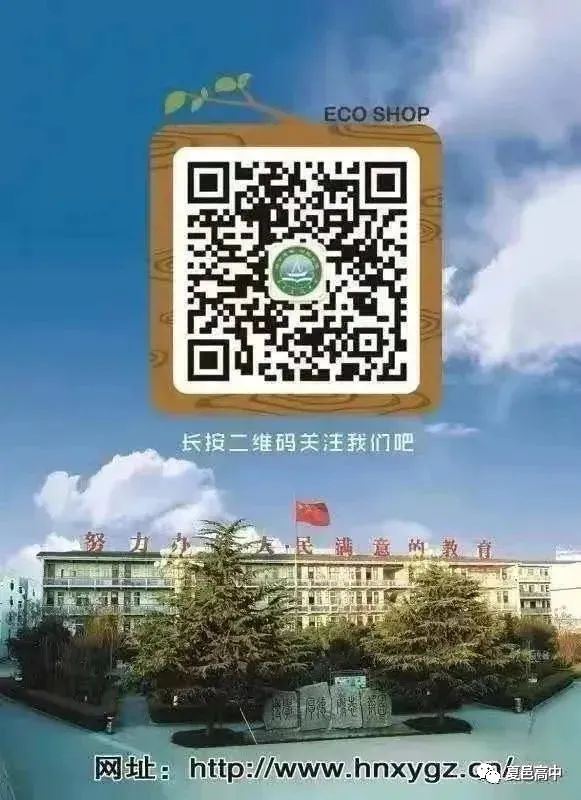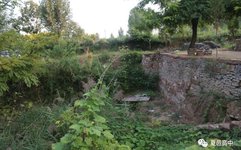A Discussion on the Combination of Reality and Illusion in Poetry (Four External Articles)Author: Dong HengxiangThe combination of reality and illusion refers to the interplay and fusion of real scenes and events with imagined ones. The two mutually permeate and transform, with reality existing within illusion and vice versa. Generally, this involves combining abstract narration with concrete description, or integrating descriptions of current reality with memories, imaginations, and future possibilities. What is based on evidence is real, what is fictitious is illusory; what is objective is real, what is subjective is illusory; what is present is real, what is future is illusory; what is known is real, what is unknown is illusory, and so on. In summary, what is seen is real, what is thought is illusory; what is already is real, what is not yet is illusory; being present in the moment and observing the surroundings is real, while thinking across time and space is illusory.Generally, “illusion” includes three types: 1. The illusory world and dreams, 2. Imagination and memories, 3. Hypothetical scenarios.The relationship between illusory and real scenes can sometimes be contrasting and complementary: forming a strong contrast to highlight the center; at other times, they complement each other to create an atmosphere that emphasizes the center. For example, let’s analyze Liu Yong’s poem “Rain Ling Bell: The Cold Cicadas Cry.” “The cold cicadas cry, at the long pavilion in the evening, the sudden rain has just stopped. In the capital, the banquet is without mood, lingering in the place, the orchid boat urges departure. Holding hands, we look at each other with tearful eyes, speechless and choked. Thinking of the past, a thousand miles of misty waves, the evening haze is heavy over the vast Chu sky. Since ancient times, the sentimental have been hurt by parting, how can one bear the desolation of the clear autumn season! Where will I wake from the wine tonight? By the willow bank, the morning breeze and the waning moon. After all these years, it should be a good time and beautiful scenery, but it is all in vain. Even if there are a thousand kinds of charm, who can I share it with?” The first half describes the environment and the scene of parting, using scenery to express emotions, blending emotion and scene, showing the reluctance and pain faced at the moment of separation. From “Thinking of the past, a thousand miles of misty waves, the evening haze is heavy over the vast Chu sky,” it transitions into the illusory. The “illusion” has three levels: the first level: “Thinking of the past, a thousand miles of misty waves, the evening haze is heavy over the vast Chu sky,” imagines the emptiness and confusion of the road ahead, expressing the author’s loneliness and bewilderment; the second level, “Where will I wake from the wine tonight? By the willow bank, the morning breeze and the waning moon,” creates a scene based on emotion, imagining the situation after waking from the wine, expressing the author’s pain after leaving the lover; the third level, “After all these years, it should be a good time and beautiful scenery, but it is all in vain. Even if there are a thousand kinds of charm, who can I share it with?” imagines the feelings when encountering “good times and beautiful scenery” after leaving the lover, thinking of the desolation of spending years apart, unable to meet again. This further expands the emotional expression space, deepening the feelings and enhancing the impact. This poem, through the combination of reality and illusion, further highlights the reluctance and sadness at the moment of parting.Similarly, Su Shi’s poem “Nian Nu Jiao: Remembering the Red Cliffs” has the first half describing the scene, such as “The chaotic rocks pierce the sky, the surging waves crash against the shore, rolling up a thousand piles of snow,” which is the scene before the eyes, the piercing rocks and crashing waves highlight the danger of the environment, contrasting with the young and accomplished Zhou Yu, thus using reality to contrast with illusion. Facing the majestic scene of the Red Cliffs, the author “remotely imagines” historical figures Zhou Yu and the historical event of the burning of the Red Cliffs, transitioning into the illusory, expressing the author’s feelings of time passing, aging, unfulfilled achievements, and unaccomplished ambitions through the recollection of Zhou Yu’s heroic deeds.For instance, the great leader Mao Zedong’s poem “Qin Yuan Chun: Snow”: the first half “The mountains dance like silver snakes, the plains gallop like wax elephants” describes real scenes; “Must be a sunny day, to see the red makeup and white attire” is an illusory scene. Another example is Du Fu’s poem “Hearing of the Government Troops Recapturing Henan and Hebei”: “Suddenly hearing from outside the sword, the tears fill my clothes. But looking at my wife and children, where is the worry? Rolling up poetry and books, joyfully going mad. Singing loudly in the daylight, youth is best accompanied by returning home. From Ba Gorge through Wuxia, then down to Xiangyang towards Luoyang.” The first two couplets are realistic. “Recapturing outside, tears fill my clothes, but looking at, rolling up poetry and books” are the sudden “joyfully going mad” of real life! The last two couplets are illusory, imagining the situation. Without these two illusory lines, if it were all realistic, it would be difficult to express the poet’s extreme joy upon hearing the news of victory and the desire to rush home! This poem is praised as “Du Fu’s happiest poem,” one of the key reasons is the wonderful combination of reality and illusion!Qing Dynasty’s Tang Biao said in “Reading and Writing Composition Theory” very incisively: “An article must not be insufficiently real to elucidate the meaning, nor insufficiently illusory to sway the emotions, hence reality and illusion should often complement each other.” This reveals the wonderful use of the combination of reality and illusion. Given that poetry is very short and limited in capacity, poets seek to combine reality and illusion, allowing them to coexist, enriching the content and expanding the artistic conception.The use of rendering techniques in poetryAuthor: Dong HengxiangRendering is originally a technique in traditional Chinese painting, using ink or light colors to enhance the artistic effect. In poetry, it refers to the multi-angle narration and depiction of the environment, scenery, or the behavior and psychology of characters, to highlight the image, create an atmosphere, and enhance the effect. Multi-angle positive description is a prominent feature of rendering.For example, the famous Han Yuefu folk song “The Mulberry Tree on the Path” illustrates this. “On my head, a low bun, in my ears, bright moon pearls. The lower skirt is made of fine silk, the upper garment is purple silk.” The multi-angle positive description of the attire highlights the beauty of Luofu, making it vivid and eye-catching. The protagonist Luofu praises her husband in a segment that employs rendering techniques. “Over a thousand riders from the east, my husband is at the top. Why should I recognize my husband? The white horse follows the black horse; the green silk ties the horse’s tail, the golden braid adorns the horse’s head; a deer sword at the waist, worth over ten thousand. Fifteen small officials, twenty morning ministers, thirty court attendants, forty city dwellers. He is fair-skinned, with a beard. Walking gracefully in the public house, moving slowly in the mansion.” The multi-angle positive portrayal of Luofu’s husband’s handsomeness and nobility aims to completely dispel the evil thoughts of the governor and make him feel ashamed of his own frivolous behavior.Similarly, in “The Peacock Flies Southeast,” when Lan Zhi is sent away, she deliberately dresses up: “I wear my embroidered skirt, with four or five strings of pearls; my feet are in silk shoes, my head adorned with shining jewels, my waist like flowing silk, my ears wearing bright moon ornaments. My fingers are like sliced green onions, my mouth like holding red powder. With delicate steps, I am unparalleled in the world.” This employs a layering technique, multi-angle positive portrayal (rendering) of Liu Lan Zhi’s beauty. On one hand, through vivid descriptions of Lan Zhi’s beauty, it evokes feelings of injustice and anger for the persecution faced by such a “peerless beauty”; on the other hand, it highlights Lan Zhi’s calmness and unwavering character in the face of adversity. The description of the governor’s family welcoming the bride is also a grand display of rendering. “The conversation is quick, the attire is like floating clouds. The blue sparrow and white swan boat, the four-cornered dragon flag. Gracefully turning with the wind, the golden chariot with jade wheels. The trotting green horse, the gold-embroidered saddle. Carrying three million in cash, all threaded with green silk. Three hundred pieces of mixed colors, exchanged for rare treasures in the market. Four to five hundred people, bustling at the county gate.” Multi-angle positive description, striving to render the luxurious scene of the governor’s family marrying Liu Lan Zhi. Such a lively scene not only forms a sharp contrast with the pain of Lan Zhi and Zhong Qing but also further expresses Lan Zhi’s noble qualities and her unwavering loyalty to love, unaffected by wealth.For instance, Meng Haoran’s “Early Cold with Longing” states: “The trees fall, the wild geese fly south, the north wind is cold over the river.” The falling leaves rustle, the wild geese fly south, the north wind howls, the weather is cold, rendering the atmosphere of autumn’s chill, positively describing the autumn cold, laying the emotional foundation for the author’s sorrow of homesickness and confusion about the future. Similarly, Bai Juyi’s “Asking Liu Nineteen” states: “Green ants in new brewed wine, red clay small stove. The evening is coming, the sky is about to snow, can you drink a cup?” The first three lines vividly render the scene of “hosting guests”: the color of the homemade rice wine is so bright, its shape is so simple and lovely; the rice wine is warming on the small red clay stove, which is new, small, and red, making it feel so warm and inviting; the sky is getting dark, and snow is about to fall, how delightful it would be to drink a cup of warm wine in such weather… Through such vivid scene descriptions, it creates a warm atmosphere in the cold weather, paving the way for the concluding question, making this question more thought-provoking: who is the author asking (the word “ask” implies “invite”)? Who is he waiting to drink with? In fact, the author is waiting for his friend “Liu Nineteen.” The author expresses his deep friendship for his friend through such strong rendering, making this emotional expression more genuine and touching.The wonderful use of rendering lies in highlighting the main object or aspect of the description, making the described object more vivid and prominent, thereby enhancing and enriching the artistic image and aesthetic effect.The use of the “small to see the big” technique in poetryAuthor: Dong HengxiangIn expressing thoughts and emotions, poetry often employs techniques similar to “one leaf knows autumn” and “a glimpse reveals the whole leopard,” which is referred to as “small to see the big.” “With the birds singing in spring, and the insects chirping in autumn,” “by picking one thing, all things are contained within.” This reflects major issues such as the rise and fall of dynasties and historical changes through small matters.Reflecting big problems from small angles, small matters highlight big matters, small within big, big containing small, evoking endless thoughts, thus creating a profound artistic conception.For example, in Du Mu’s poem “Red Cliffs”: “The broken spear sinks in the sand, the iron is not yet melted, I will wash it clean to recognize the previous dynasty. If the east wind does not favor Zhou Lang, the copper sparrow will lock up the two Qiaos in spring.” Starting from the small angle of the sunken spear, it leads to the Battle of Red Cliffs. Through the small angle of whether the two Qiaos are captured, it foreshadows the great issue of whether the Wu Kingdom will perish, which is “small to see the big.” Who are the two Qiaos? If they are captured, what does it mean? Thus, “If the east wind does not favor Zhou Lang, the copper sparrow will lock up the two Qiaos in spring” is much more meaningful than directly stating that if the east wind does not favor Zhou Lang, the Wu Kingdom will perish.“Small to see the big,” “words close to the meaning but far-reaching,” adept at using imaginative thinking, believes Zhou Yu’s victory was due to luck, expressing the poet’s frustration and dissatisfaction with the hero’s lack of opportunity, while also expressing the poet’s lament for the rise and fall of the country.Similarly, Yuan Zhen’s poem “Xing Gong”: “The ancient palace is desolate, the palace flowers are lonely and red. The white-haired palace maid is there, idly talking about Xuanzong.” Selecting the white-haired palace maid to talk about the tales of the Tianbao era reflects the endless sorrow of the palace maid, criticizing the emperor’s debauchery, and expressing the poet’s deep feelings of prosperity and decline. Once the emperor leaves, the palace maid must guard it for a lifetime, living and dying alone, how tragic. The red flowers usually represent lively scenes, contrasting the beautiful scenery with the desolate mood, highlighting the palace maid’s sorrowful emotions of confinement.For instance, Du Mu’s “Passing the Huaqing Palace”: “Looking back at Chang’an, embroidered piles, on the mountain top, a thousand doors open in order. A rider in red dust, the concubine laughs, no one knows it is the lychee coming.” Through the typical small matter of sending lychees, it criticizes the extravagant and debauched life of Xuanzong and Yang Guifei, achieving an artistic effect of “seeing the big through the small.” The camera-like combination: the usually closed palace doors suddenly open one after another. Next, there are two close-up shots: outside the palace, a special envoy rides a horse, racing like the wind, raising clouds of dust; inside the palace, the concubine smiles. The several shots seem unrelated, but they all contain the suspense carefully arranged by the poet: “Why are the thousand doors opening?” “Why is the rider coming?” “Why is the concubine smiling?” The poet deliberately does not rush to reveal, until the tense and mysterious atmosphere makes the reader eager to know, then subtly and indirectly reveals the answer: “No one knows it is the lychee coming.” The two words “lychee” reveal the truth of the matter. The emperor Li Longji, who favored Yang Guifei, faced the beauty’s worries and her preference for lychees, sparing no effort to use all his manpower and resources to send fresh lychees from over a thousand kilometers away in Lingnan every day for Yang Guifei. The distance, the enormous consumption of manpower and resources, even for today’s standards, is extremely luxurious, but at that time, the emperor did not care, and the Tang Dynasty transitioned from prosperity to decline, leading to the An Lushan Rebellion, one can imagine.“Small to see the big,” reflects major themes through ordinary and subtle matters, prominently expressing the center, offering great flexibility and infinite expressiveness, providing readers with a broad space for imagination, capable of generating rich associations, and having a strong impact, while also achieving a subtle and thought-provoking effect.The Legend of Xiaozhai—The Origin of the Horse-Dug SpringAuthor: Dong HengxiangIn the undulating mountains south of the Songshan range, there lies an ancient village with a history of a thousand years—Xiaozhai Village. It is bordered by Xiaoliu Mountain to the west, Shiji Mountain to the south, and Daliu Mountain to the north, surrounded by mountains on three sides and land on one side, with beautiful scenery and spiritual energy. This village, with only over two hundred households, once had a flourishing big locust tree, which is now withered and decayed. The old houses before us are dilapidated, the gray tiles on the roofs are covered with moss, and several tiles have already slipped off. The thick walls, after being washed by rain, appear to be riddled with ravines, as if slowly telling the returning old friends about the years of wind, frost, rain, and snow, evoking people’s memories and explorations of history, as well as reflections on reality.The Horse-Dug Spring is located in the southeast of Xiaozhai Village, at the northern foot of Xiaoliu Mountain. It is said that during the late Xin Dynasty, when war raged and the world was in chaos, Liu Xiu followed the mandate of heaven and raised an army against Wang Mang. At that time, Liu Xiu was at a disadvantage compared to Wang Mang’s forces and was pursued by Wang Mang’s troops. It was June, with the sun blazing hot.When Liu Xiu and his followers were chased to a small flat area on the northern slope of Xiaoliu Mountain, they were already exhausted, thirsty, and weary. Liu Xiu sighed, “If only there were a spring here to quench my thirst!” This sigh moved the blue-maned horse beneath him, which suddenly neighed to the sky, kicked the ground, and in an instant, a pit appeared. Suddenly, clear spring water gushed forth from the pit dug by the horse’s hooves. Liu Xiu was overjoyed, scooped up the spring water to drink, and felt invigorated, then hurried southwest. Liu Xiu was saved and established the Eastern Han Dynasty in 25 AD, known as Emperor Guangwu. The Horse-Dug Spring later became a source of water, allowing the surrounding residents to fetch water for cooking, irrigating fields, and growing crops, nourishing the people of Xiaozhai Village for a thousand years. Until a few years ago, the Horse-Dug Spring still had a continuous water source.
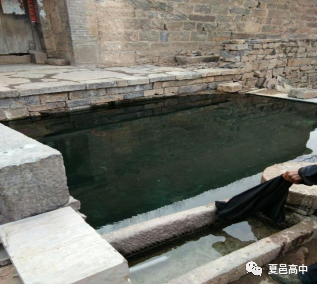
01- Early Horse-Dug SpringToday, agriculture has fully modernized, and the mission of the Horse-Dug Spring has also come to an end. What presents itself to us is the horse-hoof-shaped pit covered with broken wooden boards at the spring’s mouth, hidden under overgrown grass, and the dilapidated temple in front of the pit. Truly, it can be said:Xiaozhai Village’s southern Horse-Dug Spring,Once clear and sweet.Saved Liu Xiu and the people,Now overgrown with grass.(Image 02)
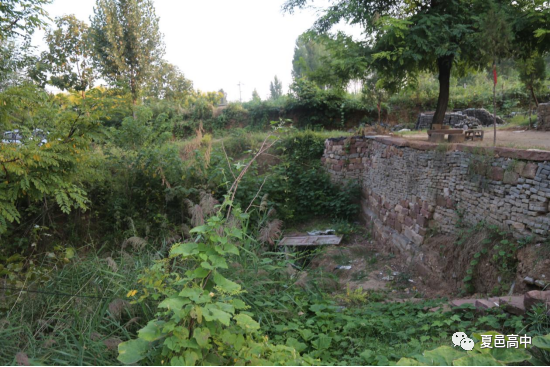
02- Current Horse-Dug SpringAlthough the Horse-Dug Spring has lost its former spirit and vitality, it has been passed down through generations, resting there, telling the profound history, enriching the beauty of present life.The Legend of Xiaozhai—The Legend of Liu Xiu’s DitchAuthor: Dong HengxiangIn the undulating mountains south of the Songshan range, there lies an ancient village with a history of a thousand years—Xiaozhai Village. It is bordered by Xiaoliu Mountain to the west, Shiji Mountain to the south, and Daliu Mountain to the north, surrounded by mountains on three sides and land on one side, with beautiful scenery and spiritual energy. This village, with only over two hundred households, once had a flourishing big locust tree, which is now withered and decayed. The old houses before us are dilapidated, the gray tiles on the roofs are covered with moss, and several tiles have already slipped off. The thick walls, after being washed by rain, appear to be riddled with ravines, as if slowly telling the returning old friends about the years of wind, frost, rain, and snow, evoking people’s memories and explorations of history, as well as reflections on reality.To the south of Xiaozhai Village, there is a ditch, known as Liu Xiu Ditch by the villagers. It is said that Liu Xiu was pursued by Wang Mang’s soldiers to this point, and the situation was critical. In a moment of desperation, Liu Xiu saw a farmer plowing the field with a horse and rushed over to ask the farmer to use the plow to cover him in the furrow. The farmer, seeing Liu Xiu’s handsome appearance and noble demeanor, predicted that he would surely achieve great things in the future, and complied with the request. Soon, Wang Mang’s soldiers arrived and questioned the farmer. The farmer pretended to be mute, only making sounds like “wu la, wu la.” At that moment, an eagle circling in the sky called out, “In the ditch! In the ditch!” Wang Mang’s soldiers were about to dig in the ditch to find him, but then heard a crow in the tree calling out “wa la, wa la” (in the local dialect of Jia County, “wa la” means “ran away”). The soldiers hesitated for a moment and continued to chase forward, allowing Liu Xiu to escape. There is another version that when Liu Xiu was hidden in the plowed ditch by the farmer, the plowing horse raised one hoof and did not dare to step down, fearing it would hurt Liu Xiu. After Liu Xiu became emperor, he built a temple here to commemorate the kind, loyal, and nameless farmer, and sent all the eagles to live in the deep mountains, while the crows could forage for food in the plains, and also conferred the title of “Big Brother of Horses” to the plowing horse. Nowadays, the horses around Jia County, when standing, all raise one hoof to rest, known as “Horse Resting Hoof.” This ditch has since been named “Liu Xiu Ditch” by later generations.Such a magical story enhances the allure of Xiaozhai Village. The years of vines and thorns that have crossed time and space bear witness to its ancient and weathered history.(Image 03)
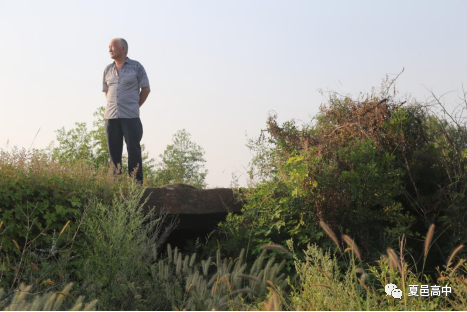
03- Liu Xiu Ditch Hidden Under Grass
Editor: Zhu Weixing Li Di
